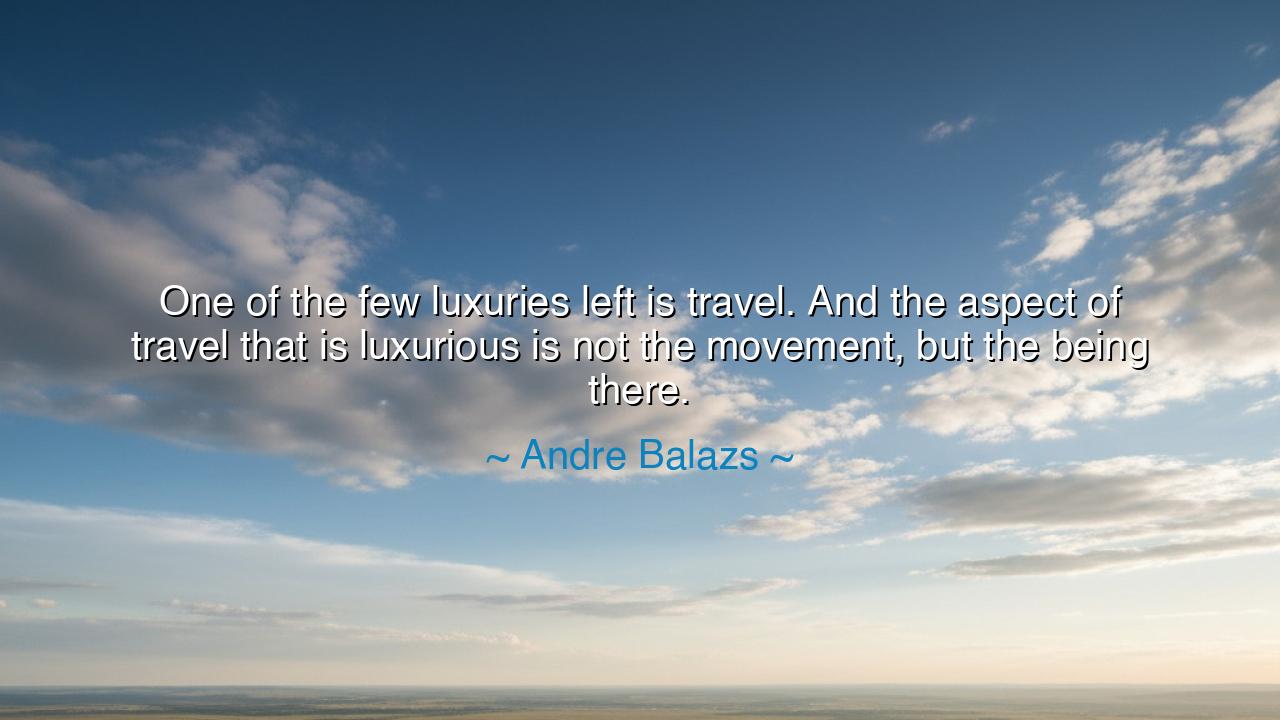
One of the few luxuries left is travel. And the aspect of travel
One of the few luxuries left is travel. And the aspect of travel that is luxurious is not the movement, but the being there.






Andre Balazs, the visionary hotelier and thinker of life’s finer rhythms, once spoke with piercing simplicity: “One of the few luxuries left is travel. And the aspect of travel that is luxurious is not the movement, but the being there.” In these words he calls us to remember that true luxury is not found in speed, in the noise of transport, or in the restless motion from place to place. The essence of travel lies in presence — in standing beneath foreign skies, in breathing new air, in surrendering oneself to the wonder of “being there.”
The ancients, too, revered this truth. Pilgrimages were not taken for the sake of the journey’s hardships alone, but for the holiness of arrival. The Greek who walked to Delphi, the Muslim who journeys to Mecca, the Buddhist who climbs to Bodh Gaya — each found meaning not only in the path but in the sacred presence of the destination. Balazs reminds us that the true luxury is not in how we move, but in where we are, in that rare gift of arriving fully in another place, another world.
History bears witness to this. When Marco Polo set forth across deserts and seas, the hardships of caravans and storms were not the treasure. The treasure was being there — standing in the court of Kublai Khan, seeing with his own eyes the wonders of Cathay, tasting the foods and hearing the tongues of distant peoples. His movement was struggle; his arrival was glory. And in his writings, he left a record not of miles traveled but of places truly encountered.
In our modern age, the movement of travel has grown common. Airplanes, trains, cars, and ships have turned distance into hours rather than years. But in that speed we risk forgetting Balazs’s wisdom: motion itself is no longer luxury, for it is accessible to many. The true luxury now lies in presence, in the rare ability to quiet the distractions of haste and to give ourselves wholly to the experience of being there. It is the difference between racing through cities and dwelling long enough to taste their soul.
Children of tomorrow, learn this lesson: luxury is not always what glitters, nor what moves quickly. True luxury is presence — to be where you are, to feel deeply the place beneath your feet, to look upon the world not as a blur from a window, but as a living reality. The river, the mountain, the foreign street — these are not treasures to be rushed past, but sanctuaries to be entered. The wealth of travel is not in the ticket, but in the stillness of your spirit once you have arrived.
The lesson is plain: when you travel, do not chase only the movement. Do not measure your journey by miles or minutes. Instead, measure it by depth — by how deeply you are there. A man who visits one place with open eyes and a still heart gains more than one who races across a dozen nations in haste. Presence, not pace, is the mark of true wealth in travel.
Practical action flows from this wisdom. When you next arrive in a new place, slow down. Put away the clock, the endless itinerary, the hurried footsteps. Sit beneath the trees, taste the food slowly, speak to the people, let the air and the light of that land become part of you. Do not merely move; be there. In this way, you will discover the true luxury Balazs spoke of — the luxury of belonging, even for a moment, to a place that is not your own.
So let it be remembered: “One of the few luxuries left is travel. And the aspect of travel that is luxurious is not the movement, but the being there.” In these words is a call to rediscover presence in an age of speed. Move when you must, but when you arrive, linger. For the gift of travel is not motion, but presence, and in presence lies the deepest wealth of all.






AAdministratorAdministrator
Welcome, honored guests. Please leave a comment, we will respond soon